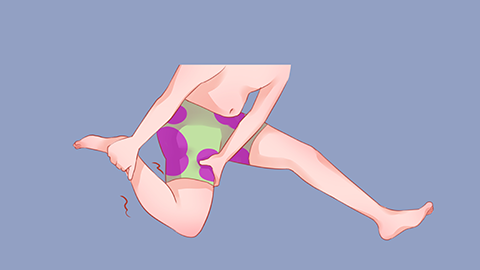What causes leg cramps in the calf?
Generally, leg cramps may be caused by strenuous exercise, cold exposure, calcium deficiency, lower limb varicose veins, lumbar spinal stenosis, and other factors. If discomfort occurs, it is recommended to seek medical attention promptly. Detailed explanations are as follows:
1. Strenuous Exercise
During strenuous exercise, the leg muscles are in a highly tense state, and the accumulation of local metabolic products like lactic acid can stimulate muscle contractions, causing cramps, which usually occur during or shortly after exercise. Before exercising, it is important to warm up adequately and engage the calf muscles. During exercise, pay attention to regulating breathing and rhythm, avoiding sudden increases in workload. After exercise, perform calf stretches such as lunges and toe flexing to help relax muscles and promote the removal of metabolic products.
2. Cold Exposure
When the calf area is exposed to cold stimuli, the muscles may contract strongly due to the cold, leading to cramps. This often occurs during sleep at night if the legs are not kept warm or after prolonged exposure to a cold environment. In daily life, keep the calves warm and add clothing promptly according to temperature changes. Cover the legs well with blankets during sleep to avoid exposure to cold. Applying heat to the calves can also help improve local blood circulation and relieve muscle tension.

3. Calcium Deficiency
A lack of calcium in the body can increase muscle excitability, making leg cramps more likely. This is common in adolescents, pregnant women, and the elderly, and may be accompanied by symptoms such as leg weakness and back pain. In daily life, eat more calcium-rich foods such as milk, eggs, soy products, and shrimp skins. Get appropriate sun exposure to promote calcium absorption. When necessary, take calcium supplements under a doctor's guidance, such as calcium carbonate D3 tablets, calcium gluconate tablets, or calcium lactate granules.
4. Lower Limb Varicose Veins
Varicose veins in the lower limbs can hinder venous blood return, causing blood to pool in the legs, resulting in muscle hypoxia and inducing cramps. This is often accompanied by leg swelling, pain, and visible bulging veins. Avoid prolonged standing or sitting and move the legs regularly, such as by rising onto the toes or walking. Elevate the calves during rest to promote blood return. Medical compression stockings may also be used under a doctor's guidance. Medications such as venoruton tablets, diosmin tablets, or hesperidin tablets can help improve venous circulation.
5. Lumbar Spinal Stenosis
Lumbar spinal stenosis can compress the nerves that control the legs, leading to abnormal nerve conduction and causing leg cramps. Symptoms may include lower back pain, leg numbness, and intermittent claudication. Avoid excessive strain on the waist, reduce bending movements, and choose a mattress with appropriate firmness. Under medical guidance, medications such as ibuprofen sustained-release capsules, mecobalamin tablets, and vitamin B1 tablets can be used to alleviate symptoms. Perform appropriate back and abdominal muscle exercises to enhance lumbar stability. If symptoms are severe, follow medical advice for further treatment.
In daily life, maintain a balanced diet to ensure adequate nutrition, engage in moderate physical exercise to improve physical fitness, and follow medical recommendations for regular check-ups.









